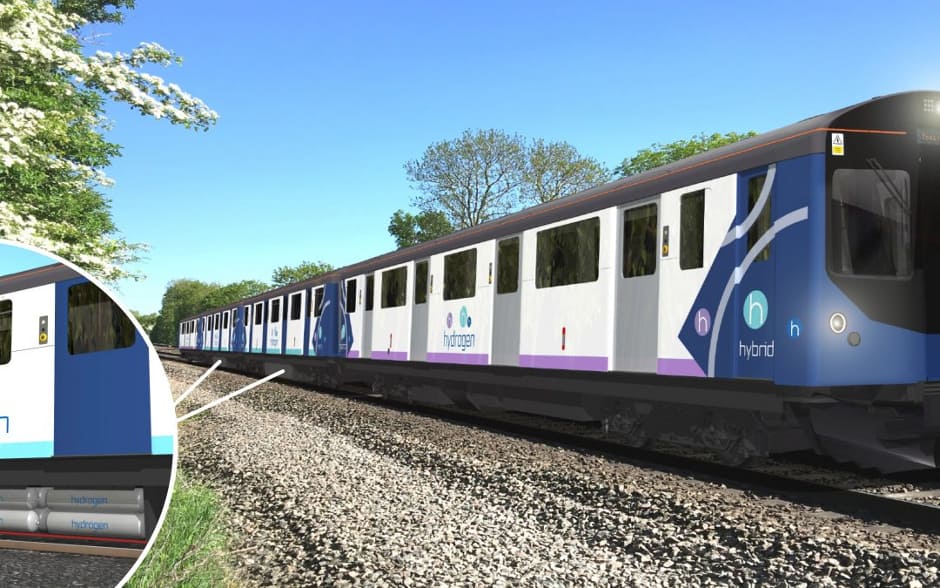
The UK train designer is developing a modular hydrogen train consisting of fuel cells, tanks, and two lithium ion batteries.
The test train, which is currently in production, is due to begin operating on the company’s track by the end of 2019, according to Vivarail’s Alice Gillman.
“We’re expecting that by the end of the year we’ll be clocking up the miles and gauging its performance,” said Gillman.
The train will be made up of two driving motor cars powered by the batteries, developed by German specialist Hoppecke, and two carriages housing the fuel cells and hydrogen tanks.
The Vivarail Class 230s will store the fuel cells and tanks in a robust casing beneath the floor, meaning there will be no reduction in space within the carriages for passenger seating.
The train, which has a range of 650 miles, also uses regenerative braking to recover energy as it slows.
The vehicle’s modular design means trains fitted with diesel generators could ultimately be converted into hydrogen vehicles, said Gillman.
“Because of the way we have built our trains they can all be modified even if they start off as a diesel train,” she said. “So the potential is that the trains we have sold as diesel units or diesel-battery hybrid units can at some point then be converted to run on hydrogen, which is part of our push to get emission-free trains out onto the network.”
The government is aiming to phase out diesel-only trains altogether by 2040. The Department for Transport recently announced £1.75m in funding to be shared between five projects designed to cut the carbon footprint of the UK’s railways.
In October 2018 Vivarail also launched a battery-powered train, to carry passengers on the Bo’ness and Kinneil Railway in Scotland. The two-car unit can be split and used to develop and test next generation train designs, with cars using different power sources charging the batteries on the driving cars.
Vivarail is now building a fleet of diesel/battery hybrids to operate the Wrexham-Bidston line for Transport for Wales, where the diesel generators will be used to charge the batteries rather than powering the train.




Swiss geoengineering start-up targets methane removal
No mention whatsoever about the effect of increased methane levels/iron chloride in the ocean on the pH and chemical properties of the ocean - are we...